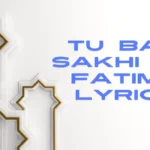Introduction
Naat is a form of poetry deeply rooted in Islamic culture, expressing love and admiration for the Prophet Muhammad (peace be upon him). Known for its rhythmic beauty and heartfelt expressions, naat has touched the hearts of millions of Muslims worldwide. For Urdu speakers, naat lyrics in Urdu hold a special significance as they eloquently combine spirituality with linguistic beauty.
This article delves into the world of naat lyrics in Urdu, exploring their history, significance, and poetic beauty. Additionally, it offers examples of famous naat lyrics and discusses how they inspire devotion and peace in the hearts of Muslims.
What is Naat?
Naat refers to poetry written in praise of the Prophet Muhammad (peace be upon him). It is a significant part of Islamic culture and is recited across the Muslim world during religious gatherings, Milad un-Nabi events, and personal moments of devotion.
Urdu, known for its rich literary heritage, serves as a perfect medium for composing naats due to its expressive vocabulary and emotional depth. Naat lyrics in Urdu often reflect themes of love, humility, and devotion, resonating deeply with believers.
The Unique Beauty of Naat lyrics in Urdu
Urdu naat lyrics stand out because of their:
- Poetic Elegance: Urdu’s vast lexicon allows poets to craft intricate verses that evoke profound emotions.
- Spiritual Depth: The lyrics often include Quranic references, hadiths, and Islamic teachings, making them spiritually uplifting.
- Musical Harmony: Many naat compositions are set to melodious tunes that enhance the listening experience.
Popular Naat Lyrics in Urdu
Here are a few timeless examples of Urdu naat lyrics that capture the essence of devotion:
- “Tajdar-e-Haram”
تاجدارِ حرم ہو نگاہِ کرم
O King of the Haram, bless us with your merciful gaze.
This iconic naat celebrates the Prophet Muhammad’s mercy and intercession. - “Shah-e-Madina”
شاہِ مدینہ، یثرب کے والی
O King of Madina, the Guardian of Yathrib.
These lyrics are filled with love for the Prophet and a longing for his city, Madina. - “Main Madine Chala”
میں مدینے چلا، میں مدینے چلا
I am on my way to Madina.
A lyrical journey expressing the believer’s spiritual yearning to visit the Prophet’s city.
Why Do People Love Naat Lyrics in Urdu?
- Connection with Faith: Naat lyrics inspire a deeper connection with Islamic teachings and foster love for the Prophet.
- Soothing Effect: The poetic rhythm and melody create a calming spiritual atmosphere.
- Universality: Despite being in Urdu, these naats transcend language barriers and are cherished by Muslims globally.
How to Write Naat lyrics in Urdu?
Creating naat lyrics requires a combination of creativity, reverence, and understanding of Islamic values. Here are some tips:
- Study Classical Naats: Learn from the works of famous Urdu poets like Allama Iqbal and Jigar Moradabadi.
- Incorporate Islamic Themes: Focus on themes like the Prophet’s mercy, the beauty of Madina, and Islamic teachings.
- Use Simple yet Poetic Language: Ensure the lyrics are accessible yet rich in emotion and meaning.
- Seek Inspiration from the Quran and Hadith: Quranic verses and hadiths often provide profound inspiration for naat writers.
Famous Poets of Naat in Urdu
Urdu literature is enriched by poets who have contributed immensely to naat poetry. Some of the most renowned names include:
- Hafiz Jalandhari: Known for his deep spiritual naats.
- Allama Iqbal: Though famous for his philosophical poetry, Iqbal’s work often reflects themes of devotion to the Prophet.
- Maulana Hassan Nizami: A pioneer in classical Urdu naats.
Significance of Naat in Islamic Culture
Naat is more than just poetry; it is an act of worship and a means to express profound love for the Prophet Muhammad (peace be upon him). It serves as a reminder of his teachings, his character, and his immense contribution to humanity. For many, reciting or listening to naat is a way to seek peace, solace, and spiritual upliftment.
FAQs:
Urdu naat lyrics are loved for their poetic richness, spiritual depth, and emotional connection. They beautifully express devotion and love for the Prophet Muhammad (peace be upon him).
Yes, anyone can write naat lyrics. Focus on Islamic themes, use simple yet meaningful language, and draw inspiration from Quranic verses and hadith.
Popular naats include “Tajdar-e-Haram”, “Shah-e-Madina”, and “Main Madine Chala”, each celebrated for their spiritual and lyrical beauty.
Conclusion
Naat lyrics in Urdu are a testament to the rich Islamic culture and the deep love Muslims hold for the Prophet Muhammad (peace be upon him). Whether recited or written, these lyrics serve as a source of inspiration, peace, and spiritual connection. By engaging with this art form, one can experience the profound beauty of devotion and strengthen their bond with faith.
May we all find solace and guidance in the poetic verses of naat.




